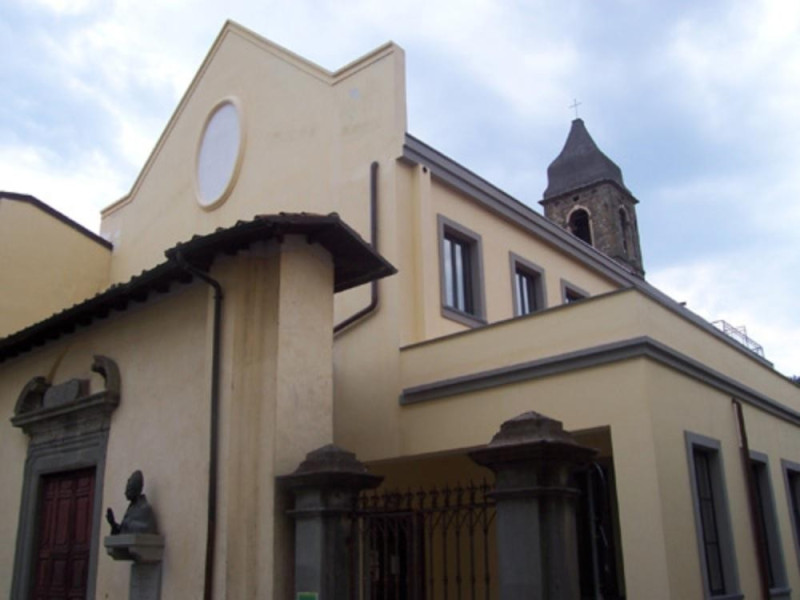Destinazioni - Comune
Fivizzano
Where
Fivizzano (Massa-Carrara)
Fivizzano, a walled city in the province of Massa and Carrara, Tuscany (Italy), became part of the Republic of Florence in the 15th century thus gaining the Tuscan republic an important foothold in Lunigiana, a key region which Genoa, Lucca, Pisa, Milan and Florence had sought to dominate since the early Middle Ages. It is also known as "The Florence of Lunigiana" because of historical economic, cultural and political links with Florence. It is situated near Verrucola Castle, which was home to the artist Pietro Cascella until his death in May 2008.
Points of interest
Orto Botanico dei Frignoli, a botanical garden and nature preserve
Fivizzano Museum of Printing, located in the Palazzo Fantoni Bononi, was created by Loris Jacopo Bononi to honor the printer Jacopo da Fivizzano who printed the first books with typed characters in c.1470
As Machiavelli described the start of the “Italian Wars”, Charles VIII, hoping to capture the Kingdom of Naples, invaded Italy at the head of a 30,000 man force, one of the first armed with modern artillery, and on 29 October 1494 the French king breached Fivizzano’s defensive walls with an artillery assault and then sacked the city on the way to Florence where Savonarola praised the French monarch as a savior who would cleanse the city of decadent corruption.
The city walls were rebuilt under the direction of Cosimo de' Medici I, Grand Duke of Tuscany, in the middle of the 16th century. (He created the Uffici and Boboli Gardens in Florence).
The baroque fountain in the main piazza, donated by Cosimo de' Medici III in 1683
The birthplace/tomb of poet Giovanni Fantoni (1755–1807), called the 'Tuscan Orazio'. Better known by his Archadian name 'Labindo'
The birthplace of, Andreola Bosi, the mother of Pope Nicholas V (Niccolò V: 1397-1455 - born Tommaso Parentucelli), the first Renaissance pope and founder of the Vatican Library
Recent research edited by Maria Fazzi and published in 2011 under the direction of the Comune of Fivizzano attests that the noted Humanist, Pope Nicholas V, was born to Andreola Bosi (wife of Bartolomeo Parentucelli of Sarzana) in Fivizzano.
Fivizzano’s Augustinian monastery, devastated by the earthquake of 1920, was one of the most culturally significant monasteries of that order in Italy. It was the home base to native-born Augustinian cleric Leondaro da Vallanzzana (known as Leondaro da Fivizzano) whose oratorical skills captivated Lorenzo the Magnificent and church goers throughout Florence and were used to formally announce the excommunication of the Dominican cleric Savonarola. The monastery was also the home of Alessio Cassani (subject of the University of Pisa thesis of Sandro Bondi, previous mayor of Fivizzano and former Minister of Culture), a friar accused of heresy for hiding within the monastery numerous writings favorable to Luther.
The Museum of San Giovanni, built within the ruins of the church of San Giovanni and adjacent to the foundations of the Augustinian monastery, displays the marble lid of the sarcophagus where the sculpted body of the Augustinian cleric Leonardo da Vallanzzana (Leonardo da Fivizzano), the nemesis of Savonarola, is displayed, eternally resting cross-armed on a bed of books. The varied displays in this small but intriguing museum also include an interesting view of the original ancient foundations of the building as well as Medieval, Renaissance and modern paintings, frescoes, and tapestries.
The birthplace of Loris Jacopo Bononi (1929) who educated as a medical doctor later achieved national recognition in higher education, industry and literature by becoming professor of chemotherapy and surgery at the University of Turin, heading the chemical firm Pfizer in Italy, making the castle Castiglione del Terziere in Bagnone and Palazzo Fantoni (now Palazzo Fantoni Bononi) leading Tuscan cultural centers and publishing three significant works which Pier Paolo Pasolini considered some of the major works of Italian 20th century literature
The birthplace of Giancarlo Cimoli (1939) who, after graduating as a chemical engineer from the Politecnico di Milano went on to become the head of varied national industrial organizations including Montedison, the Ferrovie dello Stato (Italian National Railway System) and Alitalia, the national airline
The birthplace of Sandro Bondi, (1959) the Minister of Culture in the Berlusconi government, who started out as the Communist Party mayor of Fivizzano only to later became a major figure in the conservative political parties inspired by Italian premier Silvio Berlusconi, Forza Italia and Popolo della Liberta
The annual 'Disfida degli Arceri di terra e di Corte' (Challenge of the Ground Archers and the Court Archers), a historical archery contest which takes place in July in the Piazza Medicea.
The annual 'Tangoworld' festival in September. It is one of the largest representations of Argentinian tango in Italy

